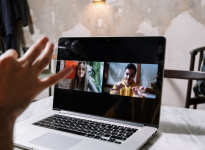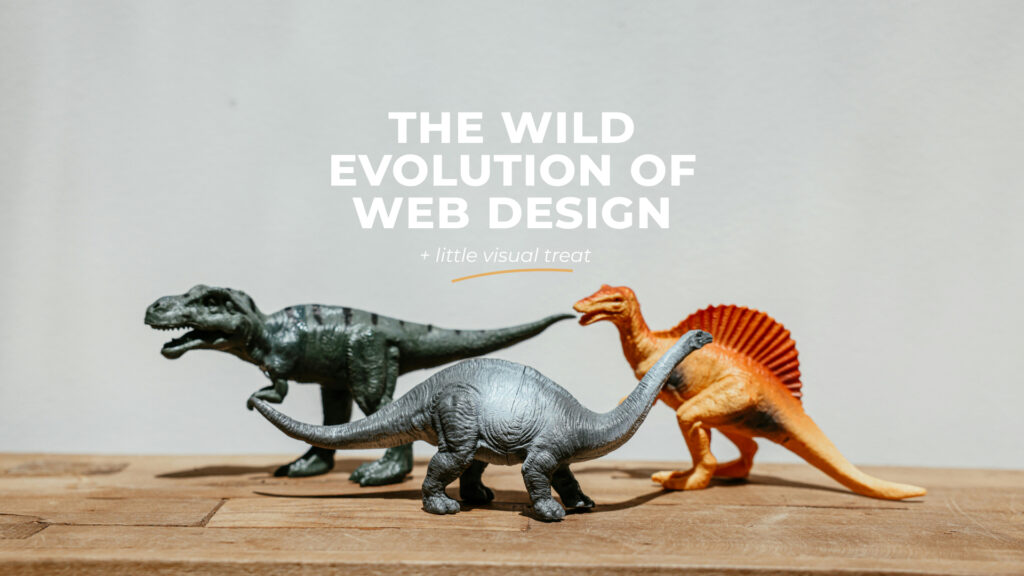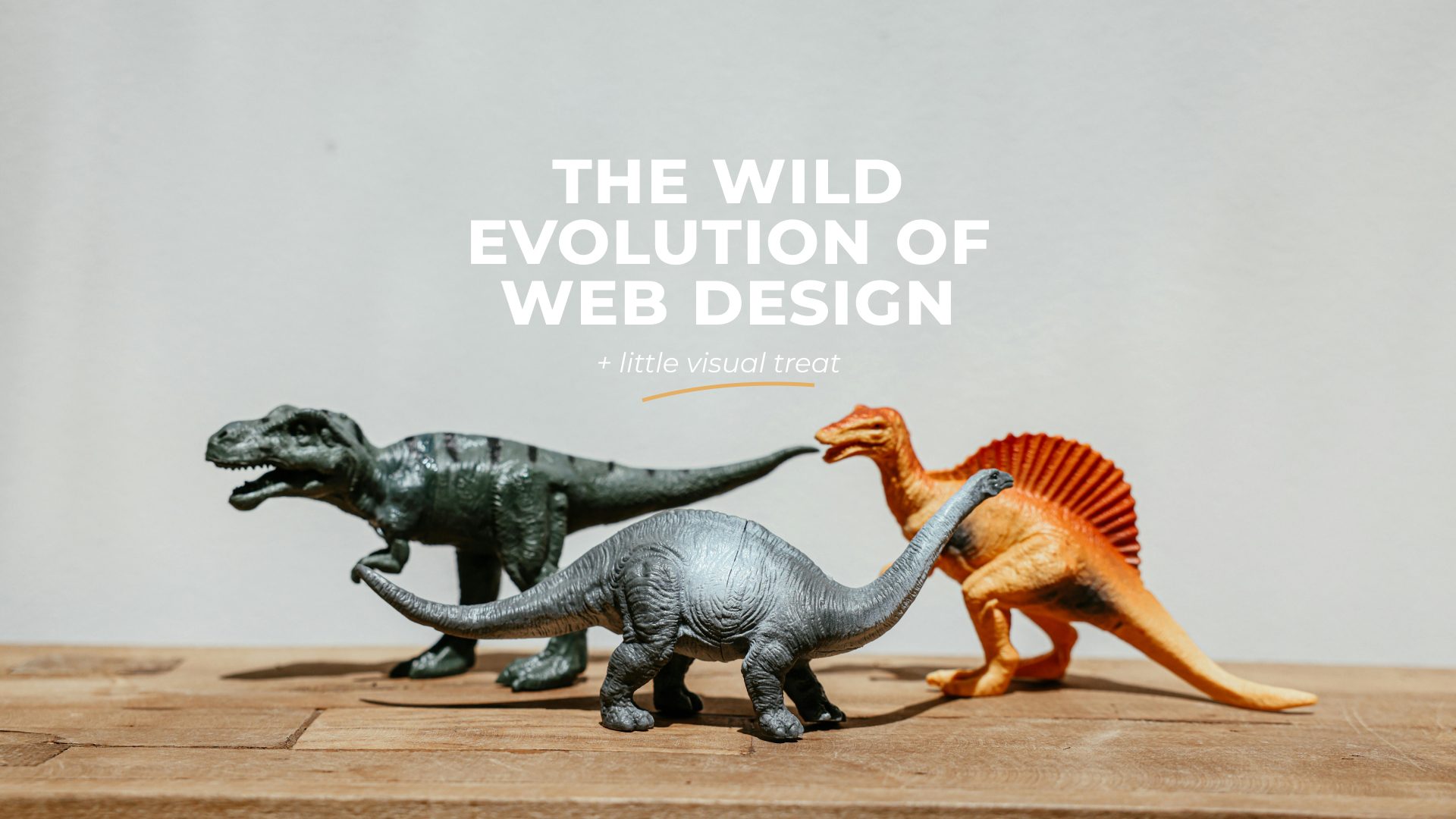Like the end of one, the beginning of a year is always a good time to reflect on what was interesting about the past year. In the world of technology, a year can feel like ten, especially given the rapid advancements shaping the digital landscape. And the most interesting thing is how web design trends reflect the evolution of humanity itself — our preferences, needs, and behaviors.
By tracking these trends, we can look back and see the digital footprint of our society, discovering how we have evolved in our approach to technology, functionality, and creativity. Web design reflects more than aesthetics, so today, we offer a window into the heart of culture to see where we have been and where we are headed in the world of web design.
P.S. We’ve prepared a little visual treat for you to dive deeper into these trends!
Table of contents:
2015 – The Era of Material Design

In 2015, Google Material Design took the lead in the Avengers of web design: clean, calculated, and a little dramatic. Think of the app as a room where Material Design has become the decorating guide. Everything from animations to color schemes was designed to make it more appealing and comfortable. Material Design was based on shadow effects and concepts of movement and depth. It was a response to previous years’ flat, overly minimalist aesthetic. Although this design system was initially somewhat dictatorial, saying, “To create a good design, follow these guidelines,” over time, websites became monotonous, and designers complained about the lack of freedom in their creative endeavors. This undoubtedly went down in history and later gave rise to the creation of Google Icons, Google Fonts, etc., which are now used by almost all designers, demonstrating the far-reaching influence of Material Design.
2016 – Typography Attracts Attention

In 2016, design became loud in every sense of the word. Traditional fonts were used unconventionally: text was often displayed in masks, where letters were cut out of the image, changing the usual approach to typography. Big, bold headlines that “shouted” about themselves became not only design tools but also a good statement about the brand’s personality, as worn fonts that resembled “vintage” were often used, as brands used a “do-it-yourself” aesthetic, and bright color schemes emphasized their energy. Hamburger menus were less talked about because, like politics in an election year, they were not recommended to be discussed after a few drinks in mixed company, especially if UX designers were among the guests.
2017 – When Websites Learned to Dance

In 2017, websites came to life. Animation returned the once-static boards and numbers, offering simple micro-interactions that caught the user’s attention. Additionally, the SVG (Scalable Vector Graphics) image format saved animation, allowing for crisp, lightweight animations that scale perfectly across various screen sizes. In addition to scalability, SVG opened up new creative possibilities because it was resolution-independent, so it looked great on any screen and device. This allowed designers to experiment with angular and curved edges, creating layouts with unique, visually striking compositions that strayed from traditional grids.
2018 – Rule Breakers

2018 was all about freedom of action. Brutalism burst into the new year like an uninvited punk band at a dinner party, opening up a space where designers could do what they *wanted* to do, not what they *had* to do. Bright colors, raw layouts, and controversial elements transformed sophisticated designs into DIY rebellions. It was ugly, but it made a statement, like intentionally wearing mismatched socks. For years, it seemed like the most potent and desirable feedback you could get about a design was, “It’s clean.” 2018 changed all that, giving life to maximalism and its “more is more” philosophy, proving that the web wasn’t just supposed to look good—it was supposed to feel alive.
But freedom doesn’t have to mean chaos—everyone organizes it differently. That’s where tools like Approval Studio shine, offering detailed reports that log client requests and track changes, eliminating confusion. It’s a magical tool for designers that combines review and project management features to streamline collaboration and give you more freedom in your creative process.
2019 – The Rise of Custom Illustration

In 2019, custom illustrations took center stage, proving originality drives engagement. 2018 showed that visuals created by companies received seven times more clicks than stock photos. According to 2018 statistics, companies’ illustrations generated 7 times more conversions than stock photos. They also allow businesses to stand out, use their own fonts, styles and colors, and best reflect the needs of both the client and the company. Among them, illustrations inspired by paper overlays stood out, adding a handmade personality to the web design. Layered textures, cutouts and imperfect lines were the undisputed trends of the year.
2020 – Immersive Realism

In 2020, web design took a bold step towards becoming even more REAL and earning its place in the sun as a decorative and functional element. With the development of technology, designers have gained the freedom to explore depth, texture and light much faster. From interactive product demonstrations to virtual fitting rooms, brands have used 3D to blur the lines between the digital and physical worlds. However, this benefits visuals and UX – interactive 3D design, encouraging users to stay longer. So, in 2020, 3D designs visually destroyed the lines between digital space and reality.
2021 – The Future Has Always Been Retro

In 2021, design didn’t just borrow from the past—it reminded us that the past never really went away. Retro fonts experienced a new wave of popularity, and vintage typography is still alive. Retro aesthetics, from pixel art to bold color combinations, have been reborn with fresh looks and modern typography trends. Several popular forms of media, like Netflix’s Stranger Things, have reinstated neon colors, gothic serifs, and vaporwave landscapes in graphic design. And it’s thanks to this series, everyone has been so eager to return to retro nostalgia, using it as a platform to experiment with the future of design.
2022 – Transparent Elegance

Glassmorphism is a design trend that focuses on creating the illusion of transparency and the effect of frosted glass. It emerged in 2022, emphasizing light, depth, and texture in digital spaces. It has not only flooded interfaces but also become an outlet for many designers, as it has become a mastermind on Dribble. Designers also used crystal and glass-like elements in 3D visualizations, moving away from the gold and metallic accents of years past. Additionally, sweet colors—bold, bright hues inspired by confectionery—dominated graphic design, web interfaces, and branding. Combined with glassmorphism, these playful, eye-catching palettes added energy and excitement to visual compositions across many industries.
2023 – Personalization and AI

In 2023, technology made it clear that the world never stands still, giving a big push to personalization as a key trend of the year. This year allowed users to be engaged like never before, with website development platforms providing tools to customize features that enable users to tailor their browsing experience to their preferences. The web became more intuitive and features like dark mode or sound adjustments made websites more accessible to people with different needs. Artificial intelligence has also helped designers improve this experience by automating some processes and allowing faster design decisions. Chatbots have become essential to personalized service at a new level, helping maintain the site’s interactivity.
2024 – When Trends Shined Like Stars on the Red Carpet

2024 was when all the trends showed up at the party and became even more remarkable. The further we move, the harder it becomes to choose just one trend that would become the top of the year. Everything is cyclical, and if one could observe the apparent dominance of one trend earlier, now they have all improved so much that all we have to do is choose how to create a website header and fill it. (PS And believe me, whatever you want, from 3D animation to gradient, everything will look incredible.) Familiar gradients, which once seemed like a design classic, can now “surprise” you with their ability to instantly change colors as if they had a mind. And 3D elements, which were once considered pure fantasy, are now as common as buttons on a website. 2024 can be described as a mixture of all the trends we have seen before, but a hundred times better!
2025 – VR & AR – A Telescope Into the Future of Design

In 2025, design is taking a bold step forward with greater interactivity and immersion. Augmented reality (AR) and virtual reality (VR) are now part of everyday design, allowing users to interact with products and brands in new ways. Nike is using virtual shoe fittings, and Sephora’s virtual makeup testing has revolutionized online beauty stores because you always know exactly what you’re ordering. It gives you the confidence that it will fit you. That’s why these are no longer just new features but essential tools for shopping and enhancing a good user experience. VR can be a powerful tool for a website, providing visitors with valuable, meaningful content in a way that helps them make purchasing decisions.
Conclusion
Looking back at how far web design has come, it’s thrilling and slightly terrifying to think about what’s next. Will we soon be able to create holograms like in *Star Wars*? Or will websites start talking to us in a voice that sounds suspiciously like a well-trained AI but with more sass? One thing’s for sure: web design will keep pushing boundaries, opening new ways to connect with the digital world. And who knows—maybe by 2030, we’ll all be attending virtual dinner parties where the food is pixelated but somehow more delicious. Stay tuned!

 TEAM SOLUTIONS
TEAM SOLUTIONS WORKFLOW SOLUTIONS
WORKFLOW SOLUTIONS



 REVIEW TOOL
REVIEW TOOL PROJECT MANAGEMENT
PROJECT MANAGEMENT TOOLS & INTEGRATIONS
TOOLS & INTEGRATIONS
 CLIENT INTERVIEWS
CLIENT INTERVIEWS









